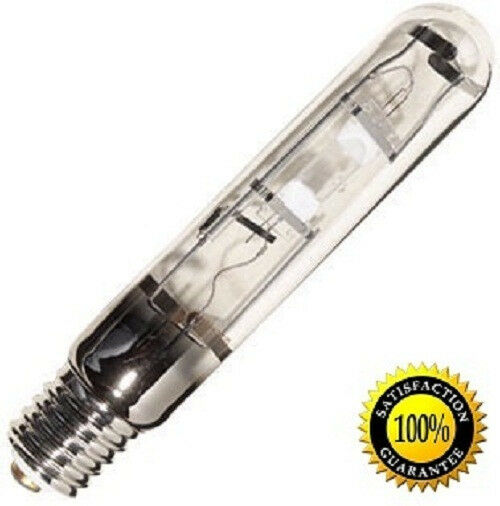Replace With LED...
LED is a great option in this instance because the higher CRI of LED lighting really makes things appear alot brighter than HPS lights. Typically the HPS is in a lower wattage than metal halide, thus LED can really compete with it. There are LED retrofit kits for this.....but my opinion is you are better off with a new fixture covered under warranty. The reason being that there is just too much "junk" on the market.
Replace With Inductive Fluorescent...
Inductive fluorescent is another option as well. Due to the poor coloring of HPS lighting it can be replaced by an Inductive at significantly less wattage. I have replaced 250W HPS with 100W Inductive and it looked 10 times brighter.
Industrial Lighting Options
You see alot of HPS lighting in Industrial areas as well, Appleton actually offers an LED and Inductive solution for this as well that holds all the characteristics of there commercial counterparts.
2-Mercury and 3-Metal Halide Lamps
I am categorizing these two lamps together based on there characteristics. Mercury lamps
have gone along the wayside because of....mercury. What you run into now is Metal halide multi vapor.
Typically they are used for exterior lighting in parking lots and exterior building lighting in the form of wall packs. When they are used inside they are mostly in the form of a high bay light of some sort. Typically in production areas, warehouse areas, and gymnasiums.
Replacement Options
The bigger the lamp the bigger the cost to replace. Unfortunately the replacements for this category are more costly, but the cost to run the old lamps is even more costly!
Exterior Options
First lets look at parking lots. In this case they are mostly 400 watt or 1000 watt metal halides. I know alot of people are buzzing about LED lights and they are an option, but I have yet to see any LED lighting that can match the punch of a 400W metal halide. Typically I like LED if it is to replace something 200W or less.
Replace With Inductive Fluorescent...
The replacement that I think holds the most merrit when dealing with 400-100W metal halides is Inductive Fluorescent. Most metal halide has a lamp life of 15-18,000 hrs., Inductive Fluorescent is 100,000 hrs. so you can reduce the maintenance greatly.
Inductive fluorescent can easily reduce consumption anywhere from 50-75%. If you have a 400W metal halide, replace it with a 200W inductive and you are more than safe. For the 1000W metal halides we have used 250W inductive and had great success.
Interior Options
Now we get to the highbays. We have a couple of options once we get indoors, the first being the F-bay or Fluorescent High Bay. These are generally a great option due to the wattage reduction and inexpensive nature of fluorescent.
Replace With 4 Lamp T-5/6 Lamp T-8...
A typical scenario is a 400W high bay. In this case a 4 lamp T5 F-bay is a great one for one replacement. If the cieling is under 15' high you can also use a 6 lamp T8 F-bay. both will get the job done and both will reduce the wattage significantly. The bonus of T5 or T8 lighting is it also has a lamp life that is easily twice as long as metal halide, resulting in a reduction in maintenance costs.
Inductive Fluorescent
Another option we have is once again, Inductive Fluorescent. They offer a wide variety of highbays that are great replacements for existing metal halide. While they are costlier than a standard F-bay they do offer a life span of 100,000 hours.
Highbays are usually a pain to service anyways due to them being so high in the air, Inductive may make more sense.....especially in areas that are very busy or are hard to access due to equipment on the ground. Not having to maintain a light for 15 years suddenly looks very appealing to end users.
Want To Learn More About Energy Efficient Lighting?
Take a look at our FREE e-book, Business Owners Guide to Energy Efficiency to learn about the benefits of implementing an energy efficient strategy for your business.


Most Popular Posts
Latest Posts